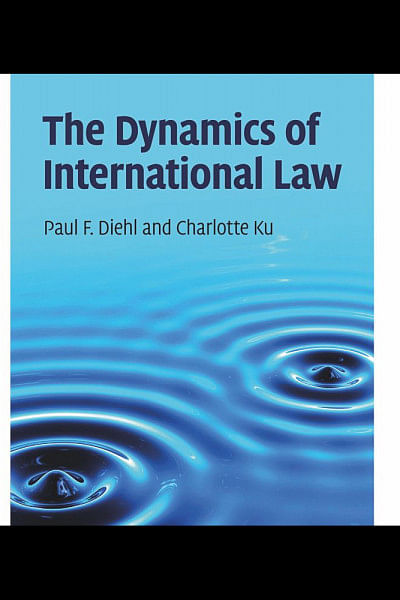The ever-evolution of international law

The book under review aims at providing a theory of how two core systems of international law, namely operating system and normative system interact with each other and how changes in one system ‘precipitate changes’ in the other. In the words of the authors, ‘[a] punctuated equilibrium theory of system evolution, drawn from studies of biology and public policy studies, provides the basis for delineating the conditions for change and helps explain a pattern of international legal change that is often infrequent and sub-optimal, but still influential’. In line with that, the attempt throughout the book was to figure out how the relationship between these two systems can influence each other and the entire international legal system as a whole.
The book begins by elucidating the concepts and following this, important factors in shaping as well as giving effect to norms are identified. The first chapter provides an assessment of the relative importance of the operating system and normative system in the ever-evolving development of international law.
In the second chapter the authors came up with a new framework for analysis. Firstly, the authors properly noted out the components of the operating system by mentioning sources of law, actors or key-players of international law, jurisdictional issues and courts or institutions. The thought-provoking aspect of the book lies with the fact that the authors have successfully managed to raise questions like who the authorised decision makers in international law are; whose actions can bind not only the parties involved but also others; how one can know that an authoritative decision has taken place; when the resolution of a conflict or a dispute gives rise to an emerging norm. And these are the questions that the operating system aims to answer. Secondly, the author’s conception of normative system is analogous to what HLA Hart defines as primary rules that impose duties on actors to carry out or refrain from certain actions.
The third chapter of the book excavates the answer to the question as to how change in the normative system affects the operating system. Only some scholarly assumptions are made in response to this question and in order to draw those assumptions, references are made to certain components of the model of the normative-operating system (such as ‘necessity’; it was emphasised that operating system for international law only changes in response to necessity). The authors illustrated the interaction between the operating system and the normative system by focusing on the particular issue of genocide because it has a larger breadth of acceptance from a norm-creating perspective with the consensus of the global community.
The fifth chapter is concerned with the influence of the operating system on the normative change of international legal order. The relationship between normative and operating system has been explained to the effect that it is the normative system which largely depends on the operating system, the mechanisms, and processes that are designed to ensure orderly processes. Most legal methods or frameworks are inadequate to deal with the operating-normative system nexus. And this in turn paves way for the international legal change.
The sixth and final chapter deals with the implications and directions from a scholarly standpoint and policy-making standpoint. The authors rightly pointed out the inadequacies for understanding how international law conditions behave and the processes by which international legal change actually occurs.
The book provides an overview of different mechanisms of international law understanding of which has a profound importance both academically and from a policy-making standpoint. The fragmentation of the two systems are clearly demonstrated and they give birth to some thought-provoking questions in the minds of the readers in respect of the development of the international legal systems maintaining a balance between the two core components. This is very rudimentary, if seen from the perspective of the international law stakeholders and it can be recommended mainly for the students as supplementary to textbooks for a better and more nuanced understanding of international law.
The Reviewer is an LLM student, South Asian University, India.

 For all latest news, follow The Daily Star's Google News channel.
For all latest news, follow The Daily Star's Google News channel. 



Comments